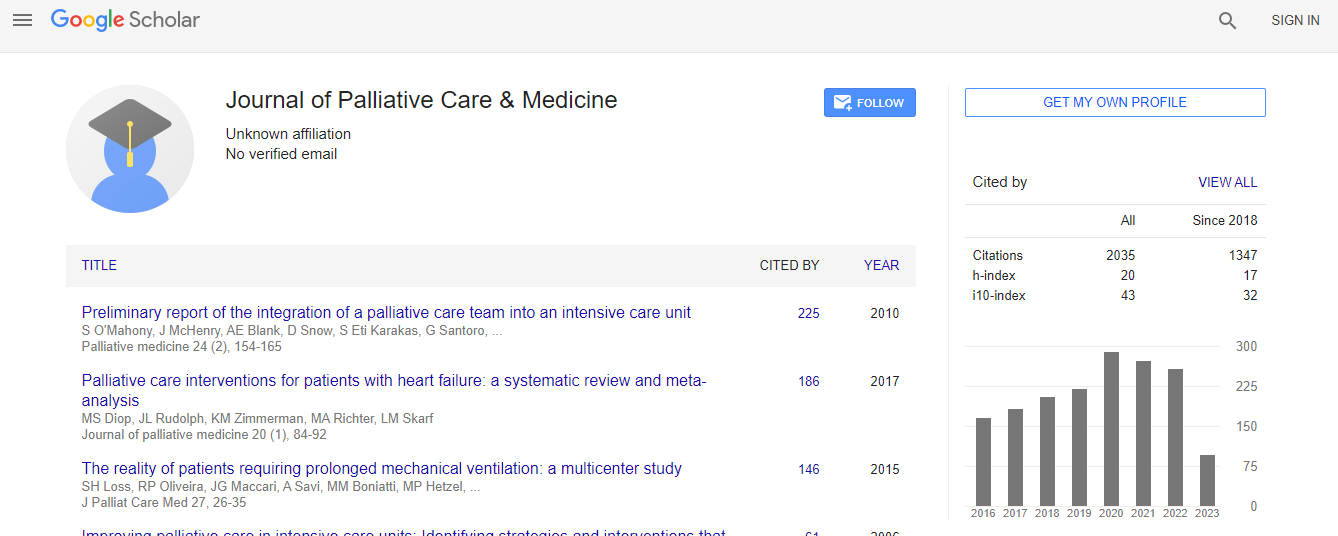Our Group organises 3000+ Global Conferenceseries Events every year across USA, Europe & Asia with support from 1000 more scientific Societies and Publishes 700+ Open Access Journals which contains over 50000 eminent personalities, reputed scientists as editorial board members.
Open Access Journals gaining more Readers and Citations
700 Journals and 15,000,000 Readers Each Journal is getting 25,000+ Readers
Google Scholar citation report
Citations : 1689
Journal of Palliative Care & Medicine received 1689 citations as per Google Scholar report
Journal of Palliative Care & Medicine peer review process verified at publons
Indexed In
- Index Copernicus
- Google Scholar
- Open J Gate
- Genamics JournalSeek
- China National Knowledge Infrastructure (CNKI)
- Electronic Journals Library
- RefSeek
- Hamdard University
- EBSCO A-Z
- OCLC- WorldCat
- Virtual Library of Biology (vifabio)
- Publons
- Geneva Foundation for Medical Education and Research
- Euro Pub
- ICMJE
Useful Links
Recommended Journals
Related Subjects
Share This Page
End-of-Life Communication
End-of-life communication is a critical component of compassionate care that involves open, honest, and sensitive discussions between healthcare providers, patients, and their families as they navigate the final stages of life. These conversations address a range of topics, including the patient's wishes, values, and preferences regarding treatment options, palliative care, and life-sustaining measures. Effective end-of-life communication helps ensure that decisions are aligned with the patient’s desires, providing a sense of control and dignity in their care. It also facilitates the planning of advance directives and do-not-resuscitate (DNR) orders, if appropriate, and helps families prepare emotionally for the impending loss. Such dialogue requires a delicate balance of empathy, clarity, and respect, allowing space for patients and families to express their fears, hopes, and concerns. By fostering mutual understanding and trust, end-of-life communication can ease the emotional burden of decision-making and enhance the quality of the final moments of life.
End-of-Life Communication
Expert PPTs
- Michael Silbermann
Michael Silbermann - Biography and Research Interest
PPT Version | PDF Version

 Spanish
Spanish  Chinese
Chinese  Russian
Russian  German
German  French
French  Japanese
Japanese  Portuguese
Portuguese  Hindi
Hindi 
